WHAT
THE QUESTION OF ART AND TIME IS NOT ABOUT
In
my attempts to encourage philosophers of art to consider the
vital
question of the relationship between art and the passing of time, I
sometimes
meet reactions that suggest an inability to
understand what the
question is about. Having reflected on the problem, I've begun
to
wonder if the cause might be this: the philosophy of art
(especially the
"analytic" variety) has ignored the question for so
long that people have simply forgotten what’s involved – they have
become “de-sensitized”
to it, so to speak.
I’ve
explained my own thinking in my books and some of my
articles, but I’ve also decided to keep a
little log of
some of the comments I’ve encountered as examples of the
misunderstandings. I’m hoping this might help people come to grips with
the
issue. I confess I’m surprised that this is necessary but as the
following points illustrate, even the obvious can be misunderstood in
quite
basic ways.
1. When
I’ve claimed that “time is the forgotten dimension of art”, I've
sometimes
been told that I’m overlooking the fact that many people have
written about
the different ways in which the passing of time is represented in film,
the
novel, music, dance, and so on. On what grounds then, can one claim
that time been forgotten?
This is a
basic misunderstanding. The various ways time is represented in
particular
works concerns the function of time within
individual works (or
perhaps within different art forms: film vs. the novel for instance).
This is
a perfectly valid topic, of course, but quite
different from the
question about the general, external relationship
between art and time.
In the latter case we are looking at how the passing of time – history
in a
general sense – affects art, and specifically how art
transcends
time.
To
illustrate the difference: someone might ask how the passing
of time is dealt with in, say, King Lear or Tom
Jones – which is
a perfectly valid topic in literary criticism. But that's
quite different
from reflecting on the fact that certain works (such as King
Lear
and Tom Jones but also many from centuries
or millennia
earlier) endure, while many others do not, and then
examining
how this occurs. This second question – a question in
art theory
not criticism – has certainly been forgotten in modern aesthetics. One
can search
high and low in books and articles on aesthetics without finding any
discussion
of it.
2. Quite
frequently when I raise the question of the relationship
between art and
time, people assume I’m talking about the so-called
“test of time” –
the attempt to judge the value of a work on the basis of how long it
lasts.
This is emphatically not the issue I'm raising. My question concerns
the
nature of the capacity of art to endure – how
it endures and why;
i.e.
what intrinsic
capacity certain works possess that enables them to live on
and, above all, how that
capacity operates. The dubious notion of a test of time
does not address these questions. In fact, as I explain in my
book Art
and Time, it serves only to muddy the waters.
3. One
comment I received from an academic working in aesthetics was
this: The
question of why art endures is very simple, isn’t it? Certain works
deal with
profound subject matter, offer deep insights, are very
innovative,
skilfully executed, and so on. Works that don’t have characteristics of
this
kind don’t last. Those that do, do. Where’s the problem?
Again, this
misses the point. Even if we accepted the criteria listed (and ignored
their
vagueness and subjective nature) they do not tell us specifically why
art endures.
They could equally well be answers to questions like: Why is one work
of art
good/great, and another not? Or: why does one work give us “aesthetic
pleasure”
(assuming one accepted that questionable notion) and another doesn’t?
In
other words, these criteria don't help us understand, specifically, why
a work
transcends time – i.e. has a special
power to live on across the
centuries. Still less do they throw light on the
crucial question of
the manner of the “living on”, which, as I
explain in my books,
might in principle occur in a number of different
ways.
4. One philosopher
of art asked me why art that endures should be
considered more
admirable, effective, etc than art that doesn’t.
Again, a
confusion between art theory and art
criticism. Whether or not
we find a particular work admirable is ultimately a judgment
we make for
ourselves (whether we appeal to supposed “criteria” or not).
The question
about art’s transcendence concerns the general nature
of art. For
example, we might like or loath Mozart and if someone tells
us that Mozart
has endured, that alone will not (or should not) change our
minds. But it
is nonetheless a simple, observable fact that certain works (much of
Mozart,
for instance) have
endured while large numbers have not, and the question
facing the
art theorist/philosopher is: why does
this happen (i.e. what
particular power do certain works of art possess that
enables it
to happen) and how does it happen
(i.e. in what way do
they endure)? Reflecting on the temporal nature of art – why and how it
transcends time – has nothing to do with handing out plaudits to this
or that
work. It is a question about the general nature of
art.
5. I deal with the following comment in my book, but it bears
repeating
here:
No art is immortal, and no
sensible person could believe
it was. Neither the human race, nor the planet we inhabit, nor the
solar system
to which it belongs, will last forever. From the viewpoint of
geological time,
the afterlife of any artwork is an eyeblink. (John Carey, "What Good
are
the Arts?" London: Faber and Faber Ltd, 2005, 148.)
Carey
(an Emeritus Professor of English Literature at Oxford!)
apparently thinks that the
question of art's capacity to endure is about whether it
endures physically. If
that were the case, art would, of course, fail miserably. The fragility
of many
works has probably made them more vulnerable than
other objects to the
ravages of time. Heaven knows how many great works have
perished over the millennia! The question at
stake has
nothing to do with physical survival; it concerns meaning and
significance:
the capacity of certain works – Macbeth,
Mozart’s Magic Flute,
Michelangelo’s paintings in the Sistine, for instance – not only to
impress
their contemporaries but also to exert a fascination on subsequent
ages, while
so many other works from the same periods have ceased to arouse
interest and faded into oblivion.
6. A
comment from an “analytic” philosopher on
the idea that (great)
art transcends time:
analytic philosophers would say
that it is
impossible to transcend time, literally speaking, except with time
machines for
example.
One can
only hope that this is not, in fact, the general view
of analytic
philosophers because, if so, it suggests how little serious thought
they
have given to art. (A propos, it’s interesting how susceptible
philosophers of
this persuasion can be to the fantasies of science fiction like time
machines. Food for thought
there...)
7. This
is a recent comment from a contemporary philosopher (of the “analytic”
persuasion, I suspect) in response to something I wrote:
When I post a letter it usually
arrives at the
address to which it is posted a few days later. Now should I think
there is a
significant philosophical question here: What is it that allows the
postal
service to transcend time and deliver a letter on Tuesday that was
written on
Monday? Why do some of my letters arrive and others not? It’s a wonder!
Why is
there anything more of a philosophical problem with
the continued
effectiveness of works of art?
I found
this comment dispiriting because, despite
the writer’s
obvious attempt to be clever, it indicates just how
little thought is
being given to the notion of transcending time in the sense relevant to
art. To transcend time in the relevant sense refers
to the capacity of certain works to remain
vital and alive
despite the passage of long periods of time – to "live on",
in less formal
terminology – like Macbeth or Hamlet,
for example, as
distinct from a play by one of Shakespeares contemporaries
that no longer holds
our interest. A letter in the post does not “transcend time”
when it goes
from one place to another (a decidedly silly thought); it perhaps
“transcends”
distance in some vague sense of the word, but
it merely takes
time. I was genuinely surprised that an academic philosopher –
of
some standing I gathered – could make
a comment as gormless as
this.
8. Here’s
a question someone asked after a paper I gave about
Malraux’s
explanation of the temporal nature of art: So is Malraux
saying that any
object can be a work of art?
I confess I
groaned inwardly at the irrelevance of the question to the paper
I had given. But that aside, let me try
again.
An
explanation of the relationship between art and time – and Malraux’s
explanation in particular – is in no sense an attempt to propose a
priori
principles about what is or is not art (assuming such
principles could be
formulated which is very doubtful**). It is an
attempt to explain, specifically, how works
of art from the past that we continue to admire have endured
– the
manner of their temporal transcendence (taking into account inter alia that
many of them were not originally viewed as “works of art”).
The traditional solution to this problem is that works of art are
“timeless”, impervious
to time, but as I've argued in my books and articles, this is no
longer a viable explanation. So, assuming we don’t simply ignore the
problem
(as modern aesthetics does) how do we solve it? My
answer, as readers of my books and articles will know, is that art
endures through
a process of metamorphosis, as explained by Malraux. But even if one
rejects
this solution, the problem itself does not go away.
One is still
confronted with the unanswered questions: What is the nature
of art's
power of transcendence? How does it work and why?
9. It
dawned on me during question time after a recent paper I
gave that
part of the problem people have in coming to grips with the problem of
the
relationship between art and time is that they have given very little
thought
to the significance of the power of art to
transcend time. It is as if
they feel that, at best, we're just dealing with another
aspect of art, perhaps
even
something rather
humdrum. This is far from the case. What other human creation defies
time – i.e. resists the tide of forgetfulness that sweeps
over everything
else, from the latest fad to social customs to religious beliefs?
Philosophy?
Perhaps. But even that's doubtful. Is there a “perennial”
philosophy,
a set of philosophical tenets common to all ages? Greek philosophy had
a hard
time of it during the Middle Ages, and even now do we endorse
everything that
Plato and Aristotle thought, or even most of it? The special
power of art
to transcend time strikes us particularly forcefully if we think about
ancient
civilizations such as Egypt. Egyptian customs and beliefs are quite
dead to us
now. We can, of
course, read
books about Egyptian mythology but even that is
like looking at museum specimens: we may learn what Anubis or Seth
etc stood for but we don’t believe in Anubis or
Seth and we never shall – and could not even if we tried. They belong
to what Malraux calls the “charnel
house of dead values”: we find their bones but that’s all. But Egyptian
sculpture
and wall painting is another matter. As in all cultures, some
Egyptian art is mediocre, but the best of it – the most powerful heads
of
pharaohs and the most impressive wall paintings, for
example –
comes
alive
for us: it shares the same mysterious power to move us as
(say) the Victory
of Samothrace, or a Shakespearean play or Mozart. So even
though Egyptian
beliefs are a dead letter to us, their art –
the best of it – is
anything but dead. It has defied time – survived as
something that still
seems vital and alive despite the thousands of years that
separate it from
us. In my book Art and Time, I call this a power
bordering on the
miraculous and it clearly is. I’m not suggesting that it is literally a
miracle. But it is nonetheless truly astonishing.
Art in Malraux’s
words is “the presence in life of what should belong to
death”.
10. When
I gave a seminar paper to ANU Philosophy on Analytic Aesthetics and the Dilemma of
Timelessness, I was genuinely surprised to
discover that a number of
those present seemed to be struggling with the term “timeless”, which
is vital
to the argument. What did I mean by it? Did I just
mean lasting a
long time? I confess I was taken aback. I assumed the
meaning of
the word was well known, especially to people in
the humanities.
Timeless, I
explained, means exactly what it says: time-less,
outside time; exempt
from time and change; impervious to change; eternal. But there
were still
some puzzled looks. "Well," I said (grasping for something that might
help, and remembering I was talking to a group of philosophers), "Think
of
Plato's 'forms'; they are supposed to be unchanging, eternal – unlike
objects
of sense that are subject to change. Same idea here." That seemed to
help
a little.
I’ve since had an inquiry by
email about the
meaning of the term. So let me try again because the idea is essential
to the
traditional understanding of the relationship between art and time
(among
other things).
God – the
Christian God anyway – is said to be
eternal. Indeed, the word is sometimes used as a synonym for God. It
means the
same as timeless (or immortal). It doesn't mean that God ages more
slowly than
the rest of us and will probably live for an unusually long time. It
means that
he has always been, and always will be, because unlike mere mortals, he
is
not affected by the passing of time: he is exempt
from change.
This is not an empirical issue (as my email inquirer seemed to think):
it is
not an observation about the apparent longevity of God; it is an
attribute ascribed
to the deity as deity, as a basic aspect
of his nature. And, as I understand Christian doctrine, those who are
saved will
also live eternally; they will change in nature.
All this
applies to other gods as well of course –
the Greek gods, for example, such as Zeus etc. Hence the well-known
phrase
"the immortal gods".
How does
this relate to art? Very simply. As I say in the paper, the explanation
the
Renaissance gave of the fact that the art of antiquity still
seemed vital
and alive after a gap of so many centuries was that it had a divine
quality – specifically,
it was, like God (or the gods), timeless, eternal, immortal. The
proposition, again, was not that art would last a long time. It was
that art,
like divine things, was impervious to change (not
in the physical sense,
of course: it could be destroyed like anything else). The idea has had
a huge
influence on Western thought, as I point out in the paper, and still
lingers on,
albeit mostly as a cliché (we still hear talk
about "an immortal melody", a "timeless classic" etc). I
argue in the paper that the notion is no longer viable as an
explanation
of how art endures and that we need a replacement. Nevertheless, we
cannot hope
to fully understand large stretches of our cultural
heritage unless
we understand the role of this powerful idea. It is a factor of major
importance in figures as various as Shakespeare, Pope, Hume,
Kant, Joshua
Reynolds (in his Discourses), many of the
Romantics, and countless
others –
including, bizarrely enough, many writers in contemporary
analytic
aesthetics who seem blissfully unaware that they
themselves are relying on it,
this being part of the "dilemma" I refer to in the title of my
paper.
I hope all this helps a little.
Questions are welcome at derek.allan@anu.edu.au
** Many decades of trying by analytic philosophers of art, for example, have brought us no closer. A consensus on what the a priori principles might be is as far away as ever. Not surprisingly...
"A work of art is an object, but it is also an encounter with time."
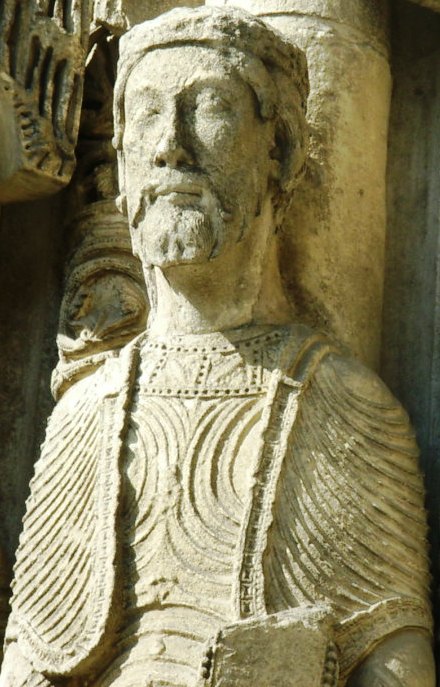
Biblical figure, Chartres
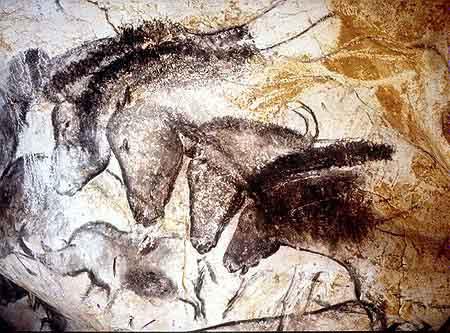
Horses, Chauvet, 30,000 BC
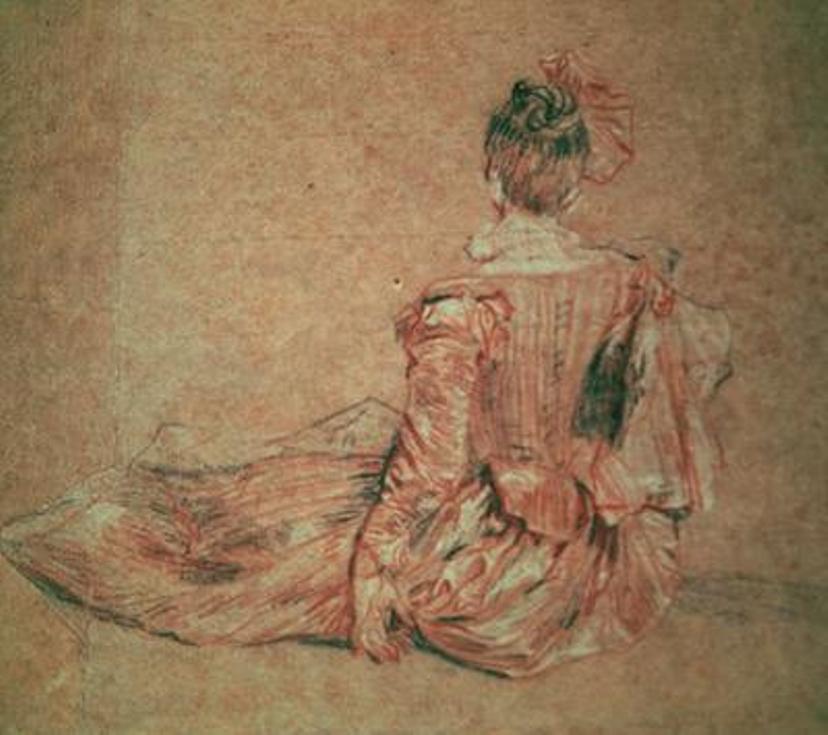
Sketch, Watteau
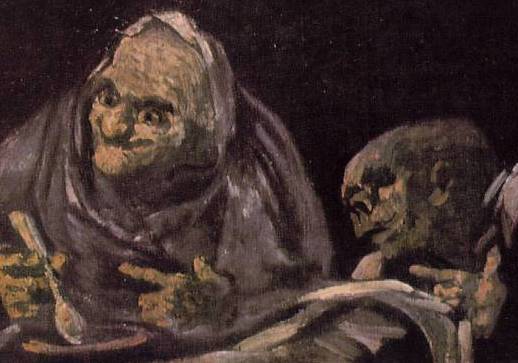
Goya, Old people
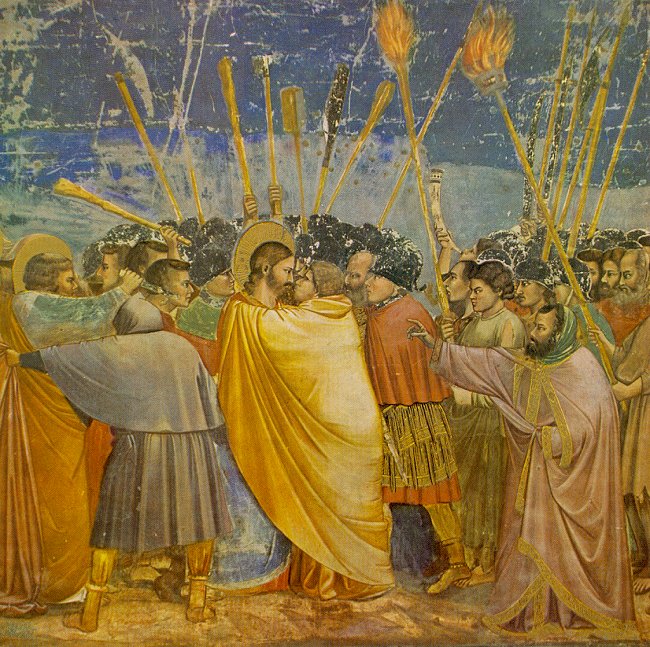
Giotto. The Kiss of Judas
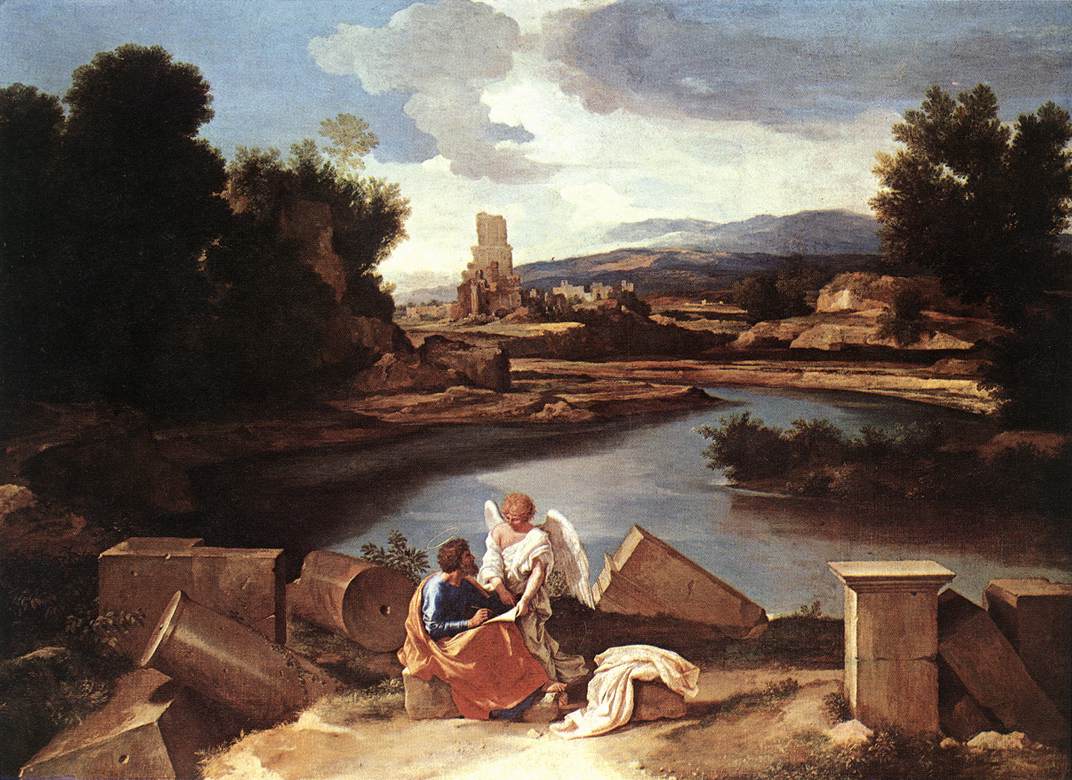
Poussin. Landscape
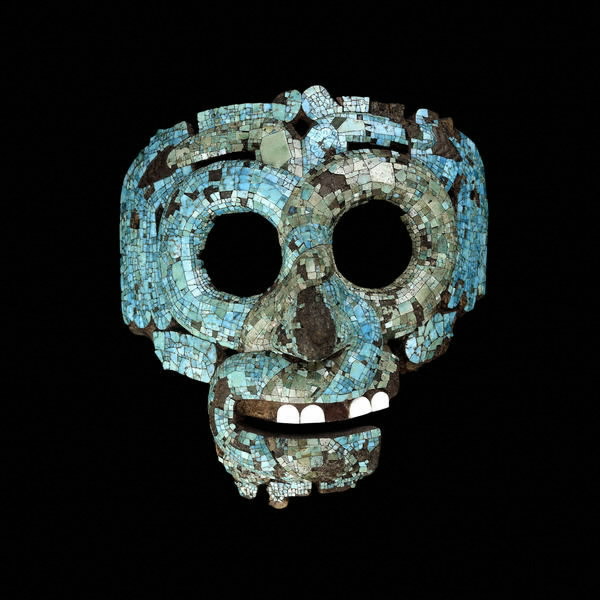
Pre-Columbian. 15th century AD. Mask of Quetzalcoatl
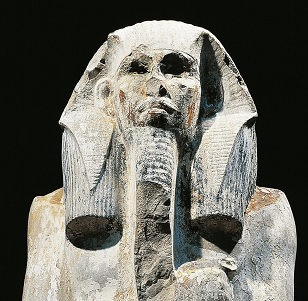
Pharaoh Djoser. c. 2630 BC